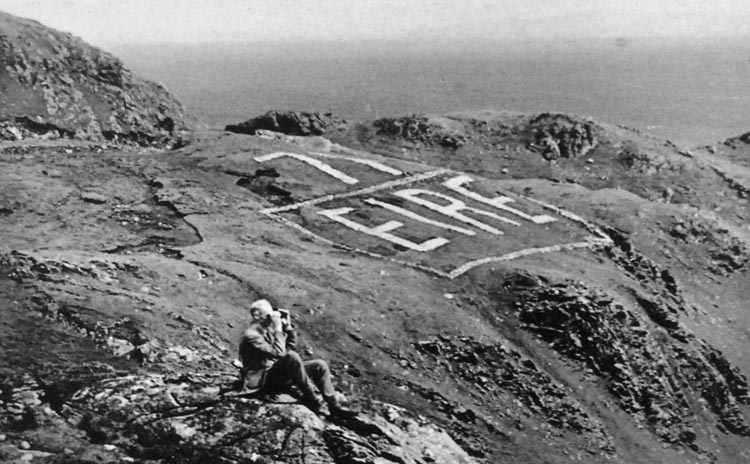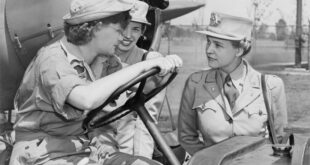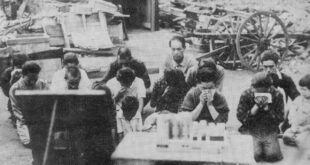
Hillside sign on the Slieve Liag Cliffs, County Donegal, on the Atlantic coast. The mark was mainly used to alert the Luftwaffe of Irish aerial space during World War II, in order to avoid accidental attacks.
As a neutral country in the war years, the Republic of Ireland deployed a number of large signs to signal passing German aircrafts that they are flying over Ireland’s airspace, and not the United Kingdom’s. However, another purpose of the signs was to act as navigational aids for Allied pilots, thus the number engraved above each of them. Several of these signs are still alive today, with some of them even visible from above.
The policy of neutrality was adopted by Ireland after the outbreak of World War II. It was maintained throughout the conflict despite pressures by Winston Churchill to join the war effort, and despite a few German air raids accidentally missing the target of Great Britain. Ireland’s fleet was also attacked by both Allied and Axis powers.
Churchill was outraged at Ireland’s position. After the war, he was quoted saying “with a restraint and poise to which, I say, history will find few parallels, we never laid a violent hand upon them, which at times would have been quite easy and quite natural”, thus considering himself to have been merciful.
People of Ireland supported the position of neutrality in vast majority. The general sentiment was geared towards affirming the country’s independence and avoiding another war. Ireland had just fought not only in World War I, but also in the Anglo-Irish War between 1919 and 1921. Later, it was the Civil War which lasted until 1923.
However, despite its neutrality, the Republic of Ireland did help the Allied war effort behind the scenes. This was done mostly by sharing intelligence and opening certain corridors for Allied forces to use.
Book suggestions ⤵️
📖 Ireland in the War Years 39-45, Revised Edition (Joseph T. Carroll, 1975)
📖 In Time of War: Ireland, Ulster, and the Price of Neutrality, 1939-1945 (Robert Fisk, 1983)
 WW2 HistoryBook World War II historical images. WW2 book reviews and movie reviews.
WW2 HistoryBook World War II historical images. WW2 book reviews and movie reviews. 

